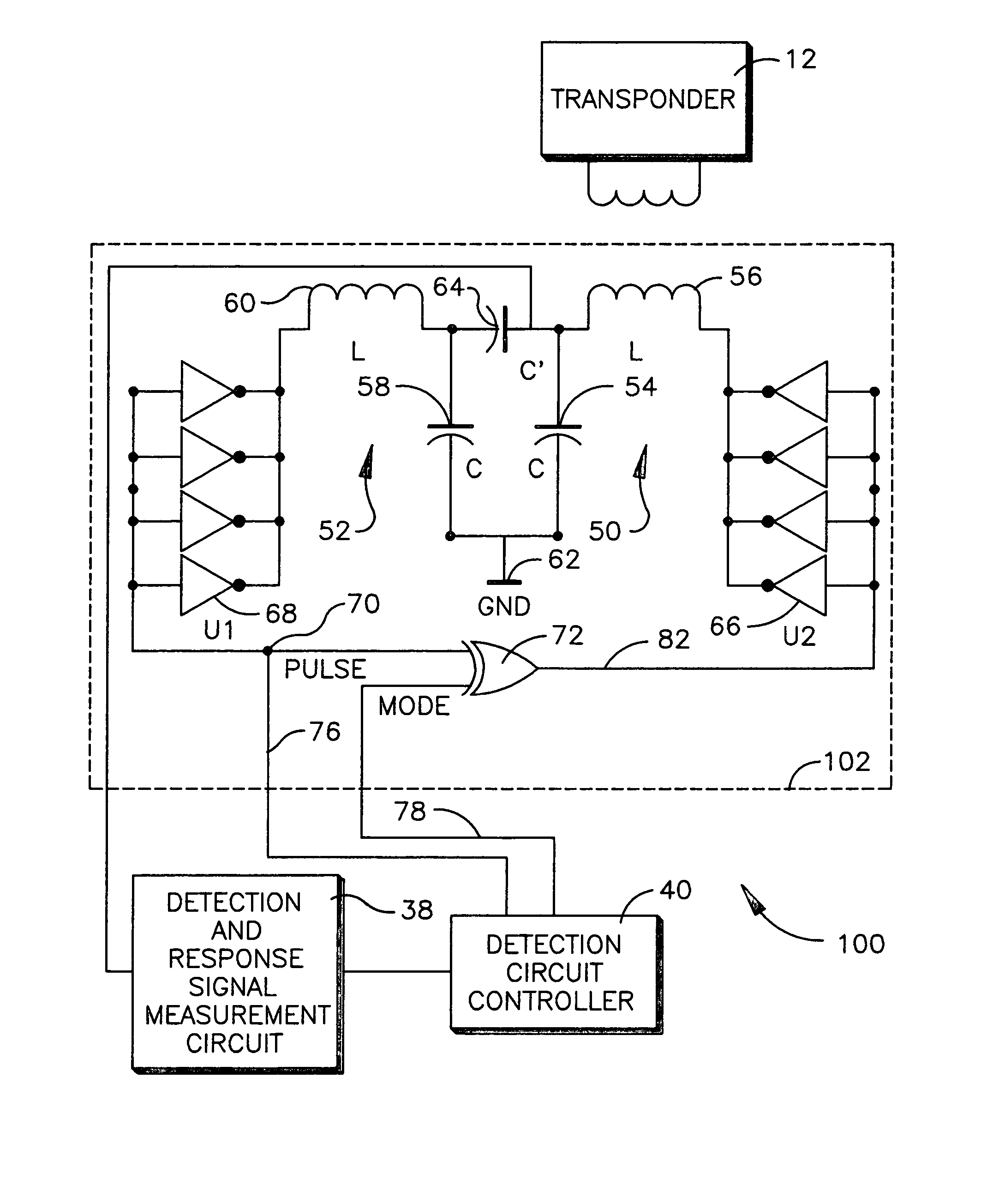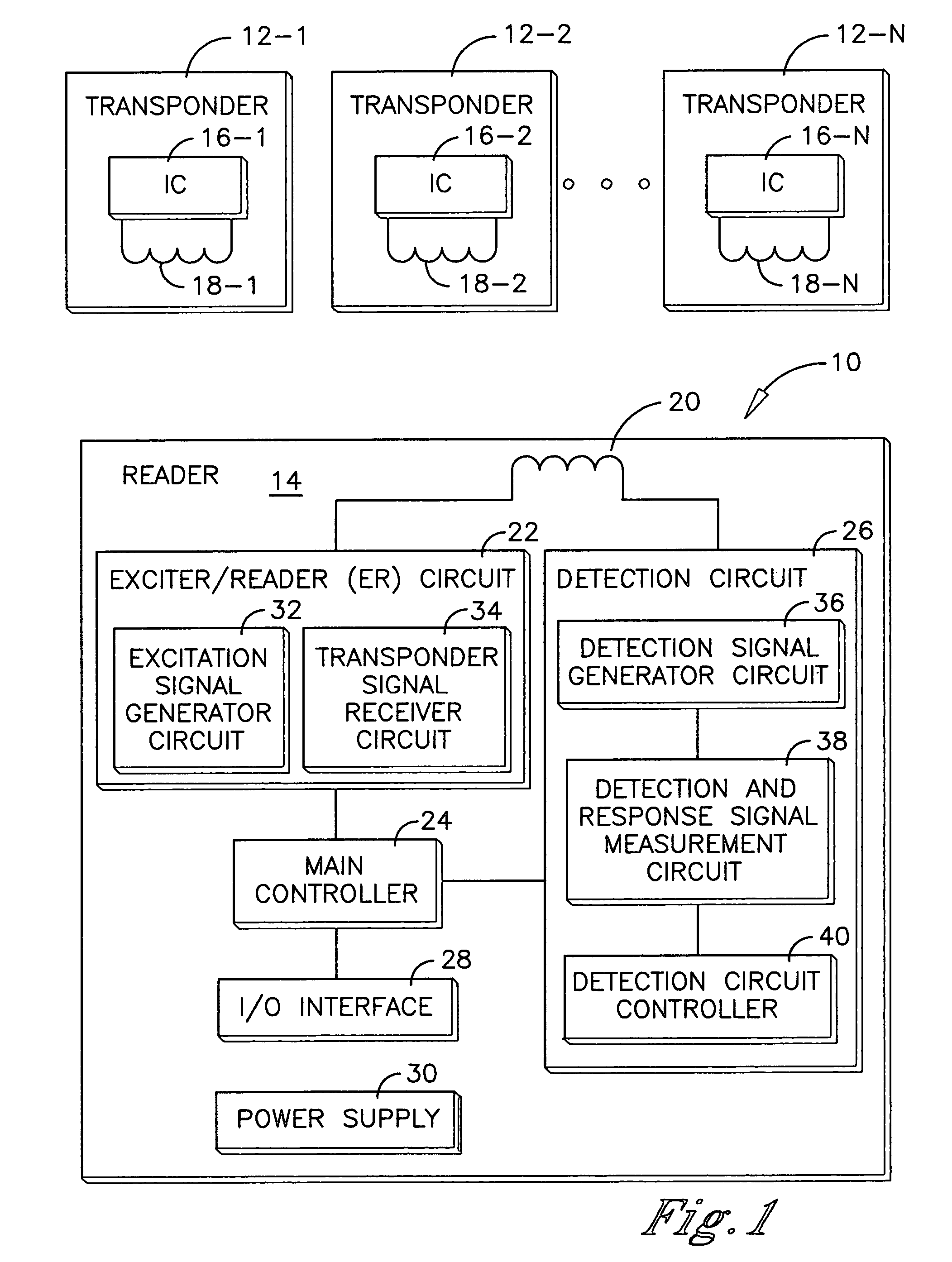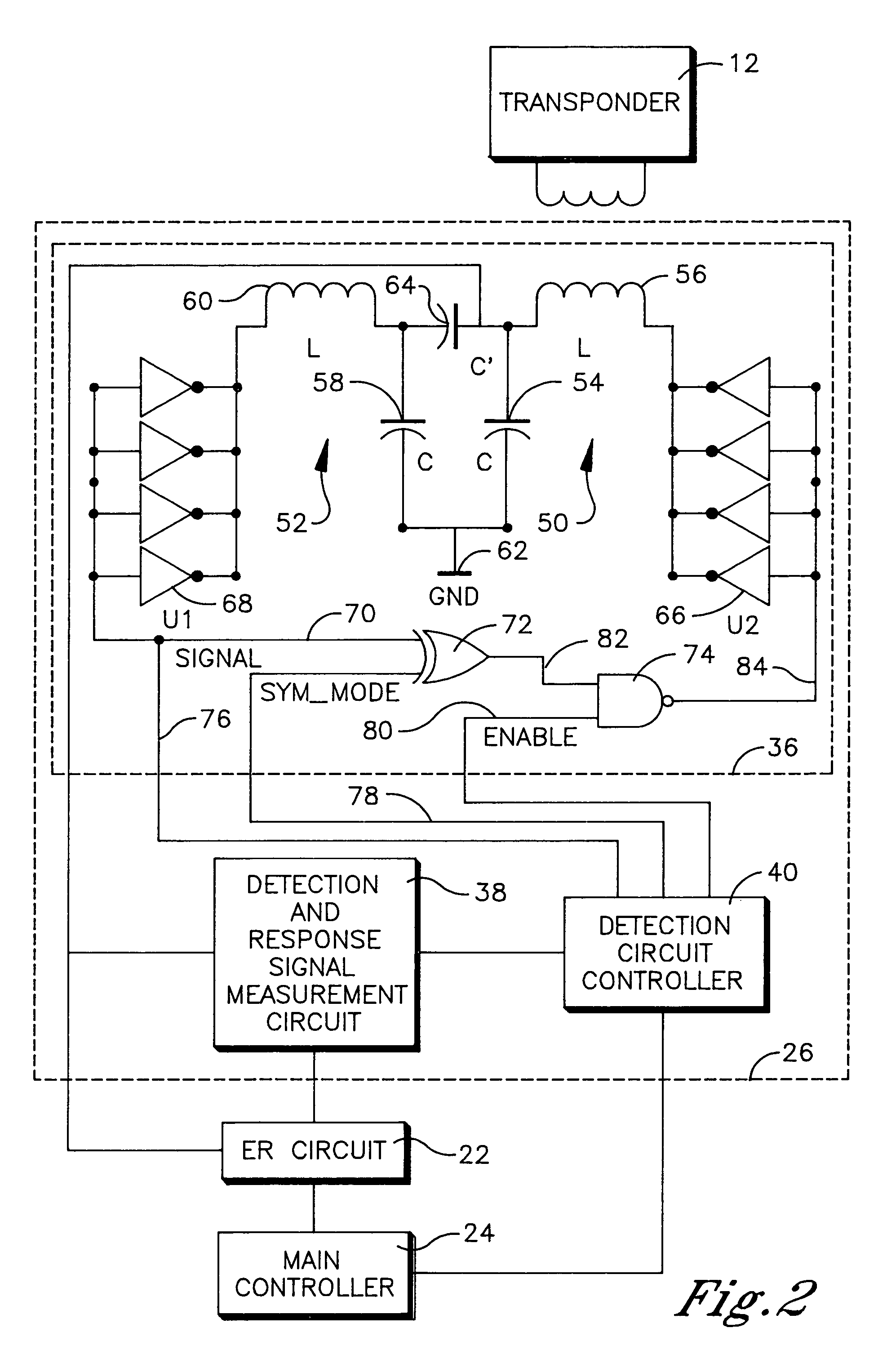Detection signal generator circuit for an RFID reader
a detection signal and generator circuit technology, applied in the field of rfid systems, can solve the problems of reducing affecting the service life of the reader,
- Summary
- Abstract
- Description
- Claims
- Application Information
AI Technical Summary
Benefits of technology
Problems solved by technology
Method used
Image
Examples
Embodiment Construction
[0036]An RFID system is shown in FIG. 1 and generally designated 10. The RFID system 10 comprises a plurality of transponders 12-1 through 12-N and a reader 14. The transponders 12-1 through 12-N are preferably passive transponders which do not require an internal power supply. Instead the electrical power required to operate the passive transponders is supplied to the transponders by electromagnetic energy transmitted from a reader. Accordingly, the passive transponders are operational when they receive electromagnetic oscillations from a reader, which are of a specific frequency and of a sufficient strength to power up the transponder.
[0037]Each transponder 12 comprises a number of functional elements including a transponder integrated circuit (IC) 16 and a transponder antenna 18. The transponder IC 16 embodies the processing and memory capabilities of the transponder 12. The transponder antenna 18 is coupled to the transponder IC 16 and is a conventional coil termed a “dual-funct...
PUM
 Login to View More
Login to View More Abstract
Description
Claims
Application Information
 Login to View More
Login to View More - R&D
- Intellectual Property
- Life Sciences
- Materials
- Tech Scout
- Unparalleled Data Quality
- Higher Quality Content
- 60% Fewer Hallucinations
Browse by: Latest US Patents, China's latest patents, Technical Efficacy Thesaurus, Application Domain, Technology Topic, Popular Technical Reports.
© 2025 PatSnap. All rights reserved.Legal|Privacy policy|Modern Slavery Act Transparency Statement|Sitemap|About US| Contact US: help@patsnap.com



